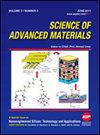Investigating the Wound Healing Activity of Silymarin Nanoemulsion Loaded in Chitosan Gel
IF 0.9
4区 材料科学
引用次数: 0
Abstract
Wound healing is a complex biological process involving a series of coordinated cellular and molecular events to restore tissue integrity and functionality. Challenges in achieving optimal wound healing have prompted the search for innovative therapeutic strategies. In recent years, nanotechnology-based approaches have gained attention for their potential in promoting wound healing outcomes. Silymarin, a natural polyphenolic compound, possesses diverse therapeutic properties including anti-inflammatory, antioxidant, and wound healing effects. Loading these compounds in a chitosan-based nanoemulgel formulation enhances their stability, bioavailability, and targeted delivery to the wound site. In this study, we evaluated the efficacy of silymarin nanoemulsion-loaded chitosan gel (SLY-CS-NEG) through in vitro and in vivo experiments. The evaluation encompassed wound closure percentage, inflammation reduction, and tissue regeneration assessments. The selected formulation No (F6) of SLY-CS-NEG, boasted remarkable characteristics, with a mean droplet size of 49.94±0.21 nm, a negative surface charge of −29.9±0.61, and sustained drug release over the 24 h. Animal experiments unveiled that SLY-CS-NEG significantly promoted wound healing compared to the control group. The results of this study demonstrated that the nanomedicine-based approach utilizing chitosan and nanoemulsion technology presents an innovative solution to overcome the limitations of silymarin and advance wound healing therapies.研究壳聚糖凝胶中的水飞蓟素纳米乳液的伤口愈合活性
伤口愈合是一个复杂的生物过程,涉及一系列协调的细胞和分子事件,以恢复组织的完整性和功能性。实现最佳伤口愈合所面临的挑战促使人们寻找创新的治疗策略。近年来,基于纳米技术的方法因其在促进伤口愈合方面的潜力而备受关注。水飞蓟素是一种天然多酚化合物,具有多种治疗特性,包括抗炎、抗氧化和伤口愈合作用。将这些化合物添加到壳聚糖基纳米凝胶配方中可提高其稳定性、生物利用度,并能定向输送到伤口部位。在本研究中,我们通过体外和体内实验评估了水飞蓟素纳米乳液负载壳聚糖凝胶(SLY-CS-NEG)的功效。评估包括伤口闭合率、炎症消退和组织再生评估。所选的 SLY-CS-NEG 制剂 No (F6) 具有显著的特点,其平均液滴大小为 49.94±0.21 nm,表面负电荷为 -29.9±0.61,药物可在 24 小时内持续释放;动物实验表明,与对照组相比,SLY-CS-NEG 可显著促进伤口愈合。该研究结果表明,利用壳聚糖和纳米乳液技术的纳米药物方法是克服水飞蓟素局限性和促进伤口愈合疗法的创新解决方案。
本文章由计算机程序翻译,如有差异,请以英文原文为准。
求助全文
约1分钟内获得全文
求助全文
来源期刊

Science of Advanced Materials
NANOSCIENCE & NANOTECHNOLOGY-MATERIALS SCIENCE, MULTIDISCIPLINARY
自引率
11.10%
发文量
98
审稿时长
4.4 months
 求助内容:
求助内容: 应助结果提醒方式:
应助结果提醒方式:


